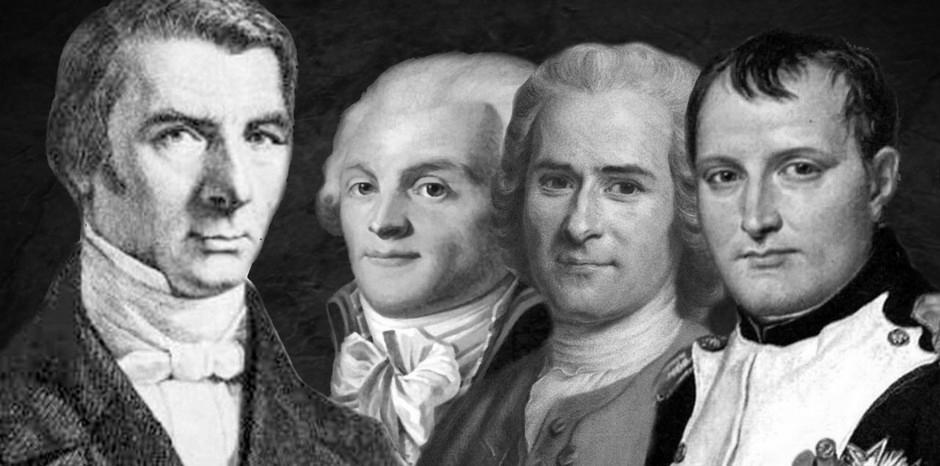Was the French Revolution a communist revolution and what do the symbols and language of the revolutionary period have to do with Marx? In this article I will discuss the relationship between Marx and the French Revolution and the various figures who contributed to it. The French Revolution, and the ideas and symbols it inspired, are among the many subjects Marx explored. The book is a good introduction to the French Revolution and Marx’s fascination with it.
- Marx’s fascination with the French Revolution
- Babeuf
- Auguste Blanqui
- Cabet
- Blanc
- Law of Suspects
- Right wing opposition to revolution
- Trotskyism
- Marx’s ideal society
- Lenin’s New Economic Policy
- Trotsky’s contribution to the American Revolution
- Willich’s departure from the Communist League
- Willich’s influence on the American Revolution
Marx’s fascination with the French Revolution
In the French Revolution, aristocracy and petty bourgeoisie fought against a proletariat that behaved like an artless genius. And the bourgeoisie was in turn fought against the industrial bourgeoisie, the army, and the Mobile Guard. Meanwhile, the rural population was in opposition to the proletariat and stood up against it. As a result, the French Revolution was a remarkably effective demonstration of revolutionary fervor.
Despite its sweeping effects, Marx’s fascination with the French Revolution is understandable. The revolution transformed the monarchy of Louis Philippe into a republic. The bourgeoisie then used political instruments to destroy feudalism and defend the republic, thereby filling the atmosphere with the ions of revolution. Hobsbawm argues that the Revolution and the war led to the emancipation of the French and a substantial part of the European peasantry.
Hobsbawm emphasizes the role of militants in the French Revolution and the primacy of political ideology carried by the organization. Socialists influenced by Marx brought to the masses a single identity and a conveyance by which to act upon it. Hobsbawm also highlights the political underpinnings of economics. This adroitly demonstrates Marx’s fascination with the French Revolution and the politics of capitalism.
Babeuf
Was the French Revolution a communist revolution in disguise? This book asks that question. The author’s disillusionment with communism is evident in the book, which reflects his own disillusionment with the system. The book also reveals his association with the cell where a leading communist interpreter of the French Revolution acted, and the book reflects his personal relationship with those communists. The book also demonstrates his personal commitment to democratic values and the importance of political participation.
Social science thinkers have been influenced by Tocqueville’s work. One notable example is how the French people’s expectations grew, resulting in disappointment. The French had become increasingly self-centred, and Tocqueville explains how they came to be disappointed. Similarly, French historian Francois Furet explains the situation in his book Interpreting the French Revolution. Interestingly, both historians share a common criticism of the French Revolution.
Auguste Blanqui
This readable biography of Auguste Blanqui puts his revolutionary goals into critical perspective and presents them as important elements of Blanqui’s life. The author contrasts Blanqui’s values with those of the mid-nineteenth century bourgeoisie, which condemns communism as an inversion of freedom. Blanqui’s beliefs include the centrality of human consciousness in the construction of reality and the need for equality in society.
Blanqui’s critique of modern progress was deeply disturbing and revolutionary in nature. He argued that in a universe with immutable laws, only human will can introduce variation into the equation. He further argued that humanity never affects nature, as the universe has been rewritten billions of times. Blanqui’s philosophy posited that humanity is a Sisyphus-like creature that is constantly repeating history, even if it doesn’t appear to be doing so at the time.
The spectre of communism that hovers over the French Revolution is a result of the aristocratic era’s obsession with the bourgeoisie. In the nineteenth century, Blanqui stood for radical atheism and Jacobinism and was a veteran of three revolutionary movements and half a dozen coups. The irony of his life and the fates of many of his followers makes the story of Blanqui’s life and work even more compelling.
Cabet
The revisionists’ main argument is that the revolution had little to do with the development of capitalism. This view ignores the fact that capitalism was well established in France before the revolution. In fact, trade increased 400 percent in the sixty years prior to the revolution, and the country’s coal and iron production increased by seven hundred percent. Those figures, however, have been debunked by revisionist historians.
The Physiocrats, who advocated a powerful interventionist role for the government, had a hand in the failure of the Commune. They promoted materialism and atheism, and influenced the tenor of society and the course of the revolution. Consequently, they fueled the resentment between the Committee of Thirty and Necker, and ultimately led to the suppression of the French Revolution.
Moreover, the bourgeoisie, the group that led the revolution, benefitted from the new structures and the development of capitalism. This is a key difference between the French Revolution and the American Revolution. In fact, the French Revolution was far more communist than the United States’. So, was the French Revolution a communist revolution? And if so, what were its characteristics? This article examines the key characteristics of the French Revolution.
Blanc
What is the role of the party of order in the French Revolution? How was it able to decoy the petty bourgeois? Did the bourgeoisie destroy the necessary conditions for parliamentary power? And why did the bourgeoisie do this? The answer is that the French bourgeoisie was pushed to do this by its own class position. The French bourgeoisie’s class position compelled it to sabotage parliamentary power and render it irresistible.
The bourgeoisie was hardly sure what to make of the February Revolution. The revolutionary proletariat and the democratic petty bourgeois were in no hurry to revert to the ancien régime. In the aftermath of the February Revolution, the pure republicans, who had supported the regency of the Duchess of Orleans, remained happy and content with their position in the Provisional Government. They won the confidence of the bourgeoisie and gained majority in the Constituent National Assembly.
The social formation that emerged in France at this time wiped out the ancien regime. It also wiped out the antediluvian colossi and resurrected the Romanism of the ancient world. This new social structure shook up French society and allowed for a more democratic society. The French Revolution was the most radical political event in European history and it spawned communism in various ways.
Law of Suspects
The Law of Suspects was a decree passed by the French National Convention on 17 September 1793, during the French Revolution. It was meant to keep criminals in check and to prevent them from committing crimes. This decree has several important implications for the history of freedom of speech and of the French Republic. Here are some interesting facts about this decree. We’ll start by examining its origins. In its original form, the Law of Suspects was a purely political measure. However, it was actually a very important tool for French people to use against criminals.
The Law of Suspects was a legal document that was drafted by Robespierre to protect his government from potential threats. It required officers to arrest all those considered a threat to the government. People who were suspected of conspiring to overthrow the government or of supporting Jacobins, or of trying to suppress the Terror, were subject to the guillotine. These laws lasted until 1794 when French military victories made them unnecessary.
Right wing opposition to revolution
The right wing movement in France has roots in the French Revolution and drew on nationalistic and reactionary Catholicism to advocate a strong centralized order. In the 1970s, the French far right began a shift away from violent tactics to embrace cultural openness and the abolition of religious discrimination. In response, the French far right formed a political party. But the French far right was hardly united in the 1970s, and a new divide began.
In the 1990s, the far right was split again by internal disputes. While Jacques Chirac was elected Prime Minister of France, he was unable to unite the FN. Hardliners split the FN into two factions. In 1988, the FN formed the French and European Nationalist Party (PNFE) with the members of the Third Position FANE and Mark Frederiksen’s FNPF. The PNFE was also implicated in the attacks in Nice and Cannes in 1988.
Trotskyism
Trotsky’s political thought can be applied to advanced capitalist countries today, but his contribution to the French Revolution was particular. France’s unique history, particular agrarian context, and the development of the modern state apparatus made it a particularly interesting case study. The French Revolution reflected the emergence of Marxist ideas and their implications for the future of the working class in France. Trotsky’s political thought had an especial relevance for this period, when it was shaped by the needs of the working class.
Leon Trotsky was born in Moscow in 1878, but grew up in rural Russia. His parents were farmers, and his mother was educated. He had two siblings, and the oldest died in infancy. At eight years old, Trotsky was sent to school in Odessa, where he was introduced to Marxism. He was active in the underground socialist circles in Paris, and he went on to publish his first magazine, Novy Mir.
The American Revolution, if you ask any Marxist, was a revolt against slavery. But what did Lenin and Trotsky think of the American Revolution? And what about Willich’s departure from the Communist League? Read on to find out. And be sure to comment below! Then, we will conclude with some observations about the Revolution. It was, after all, a revolution for individual freedom.
Marx’s ideal society
One of the great ideas of Karl Marx was to have all property owned in common. According to this theory, all citizens should own an equal share of property, with all people living in harmony. The American Revolution grew out of these ideas, which Marx and Engels embraced and pushed forward. Marx’s idea was based on the idea that all individuals were equally valuable. However, this theory spawned many problems.
Marx’s idea was to make a socialist society. The capitalist system consists of private property, market exchange, profit-and-loss accounting, and labor markets. As a result, the proletariat would realize its collective power to overthrow capitalists. In the long run, this will lead to a socialist revolution. But if the workers are not aware of the possibility of a socialist society, they will remain trapped in the capitalist system.
Under socialism, the fate of the individual depends on the development of the entire population. This development relies on the general changes in people’s consciousness and their ability to produce creative work. When discussing the evolution of man in the new society, Marx focused on the issues of freedom and development. He also looked at all-round development as an end in itself, which has never happened before. But it did bring about the modern welfare state.
The new society will be an association of workers, with each participating in a different type of production. The ideal individual will understand the aims of communism and put the common good before their individual interests. This is a tendency of history, which is why it is important to understand how it developed in the United States. And what will happen if you are able to fully understand this theory? Here is a brief overview of the key points of Marx’s vision for the new society.
Lenin’s New Economic Policy
The crisis of 1921 illustrated the general problems of Lenin’s New Economic Policy. While it restored the Soviet Union’s economy to pre-war levels, it did not create an effective framework for industrialisation. While it allowed some forms of private economic activity, it failed to achieve the goal of catching up with the advanced capitalist countries. The crisis had profound consequences for both the Soviet Union and the United States.
In October 1921, Lenin discussed the New Economic Policy in his speech to the 2nd Congress of Political Education Departments. He argued that the country needed to immediately implement this policy to overcome the disastrous effects of the War Communism. While the Bolsheviks had won the war, they hurried to Communism and hoped to use capitalism as a bridge to communism.
The New Economic Policy, as it was known, stressed the Principle of Personal Incentive and Personal Responsibility. It allowed peasants to trade freely with one another, if they paid a small tax. This tax was guaranteed to be low and was designed to prevent private businesses from overextending themselves. It based its economic system on the belief that people would follow it if given the chance.
The Soviet Union subsequently underwent a rapid period of social change. While Lenin did not personally rule the country, his ideas would continue to affect society and economics for decades to come. The Russian revolution had changed the course of history. The Soviet Union was no longer a capitalist society; it became the largest country in the world. The Soviet Union had a new political system, with a new government and a national economy.
Trotsky’s contribution to the American Revolution
Leon Trotsky was born in Odessa, Russia, to a middle-class family. He was a child of a Russian farmer and his mother was an educated, middle-class woman. He had an older brother and sister, but two of them died in infancy. At eight years old, Trotsky was sent to school in Odessa. While he was in school, Trotsky became involved in an underground socialist group and began to study Marxism.
Although the revolution was temporary, Trotsky continued to function as a military leader. His role during the Battle of Pulkovo was to organize forces that broke Kerensky’s efforts. Then, he and Lenin defeated coalition government proposals. After the war, Trotsky was elected Chairman of the Petrograd Soviet of Workers’ and Soldiers’ Deputies. He remained active until his death.
The articles in Novy Mir are almost identical to those in Lenin’s Letters From Afar. They deal with the most fundamental issues surrounding the revolution, including the attitude towards peasants and the liberal bourgeoisie, the need for a provisional government, and the possibility of world revolution. Although Lenin’s writings are considered revolutionary, they are not universally acknowledged.
Although Trotsky had a large role in Russia’s early revolutionary movement, his contribution to the American Revolution was much smaller. His contributions were often overshadowed by the Revolution itself. But he was able to make a profound difference in the lives of many Americans, and Lenin considered his work a «miracle» that would change the world. This is exactly what Lenin meant when he referred to Trotsky as a revolutionary.
Willich’s departure from the Communist League
Willich’s departure from the Communist League in the aftermath of the American Revolution demonstrates how the Communist movement remained split over ideological differences. During the 1850s, Willich reportedly had an intimate relationship with Fleury, a Prussian spy. Willich knew of Fleury’s activities since August 1852, but did not intervene until the Prussian government disclosed his role. Nonetheless, Willich’s intervention removed Hirsch and his supporters from England, and he also discredited his own Communist activities.
Willich was also concerned that his involvement with the Communist League would expose the secret society of the Marxist party, and decided to leave the organization. He did not want to be associated with such a group and cited passages from the minutes of the Central Authority of the London-based Communist Party, dated September 15, 1850. Willich’s departure from the Communist League after the American Revolution was, therefore, a sign of discontent.
In addition to Willich’s resignation, the Dietz archive contains a genuine specimen of W. Liebknecht’s handwriting. Rings and Birnbaum gave Schmitz their original letters to compare to the Dietz archives. The two lawyers were also able to compare the minute-book with Liebknecht’s handwriting. The results of the Dietz archive were revealing.
In addition to the deposition of Willich, the trial of Steingens revealed that Hentze, Willich’s friend and the Dietz archive reveal that Steingens had ties to the group. Hentze falsely claimed that Becker was a member of the League in 1848. During the trial, Willich and Steingens were both convicted of criminal charges of association with the League.
Willich’s influence on the American Revolution
In Willich’s biography, David Dixon shows the complex and often conflicting relationship between the revolutionary movement and German aristocracy. Willich, who emigrated to the United States in 1794, first joined the French revolution as a political prisoner in Brussels. But he soon returned to America, where he was welcomed as a hero by the radical German community in Ohio. He also became an early supporter of the Republican Party, and he backed Lincoln’s election in 1860.
Willich describes how, in 1851, Louis Blanc organized a counter-demonstration of Blanqui’s banquet. The reception was open to all and anyone could attend. But Willich’s account reveals that Marx was not invited. He was a «former Saxon police agent,» and his letters to Louis Blanc were addressed to Dietz. Despite this fact, Marx’s actions were instrumental in the revolution.
Willich was the most competent German officer of the American Revolution, and he was one of the bravest. He had untiring energy and distinguished abilities. He was also a German refugee, and he helped organize his fellow immigrants into the 9th Ohio Volunteers. Later, he was given command of the 32nd Indiana Volunteers. However, in 1862, Willich was captured and subsequently spent several miserable months in Richmond’s Libby Prison. During his imprisonment in Richmond, Willich developed a new strategy for advancing in battle: he devised an advance firing maneuver where the first rank would fire and then advance while reloading.
Willich’s brigade had advanced rapidly and overran the Third Brigade. The Confederates counter-attacked while Baldwin’s brigade was outpaced. But Willich tried to inspire his men, and his men’s efforts to stay at the front line were ultimately futile. After the battle, Willich’s First Brigade pushed back the Confederate defenders and Colonel Joseph Dodge’s Second Brigade.







